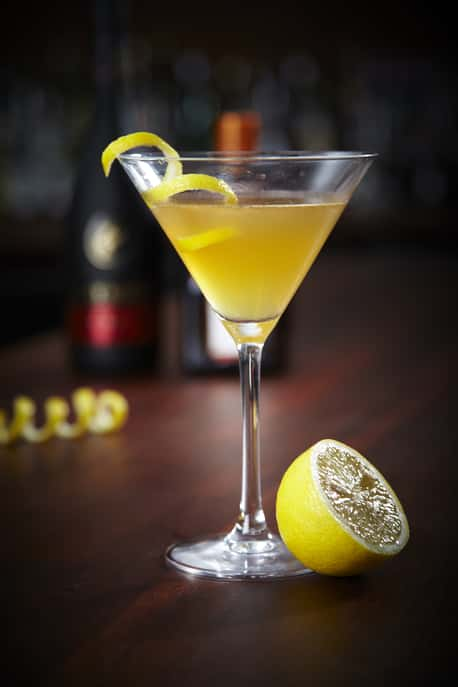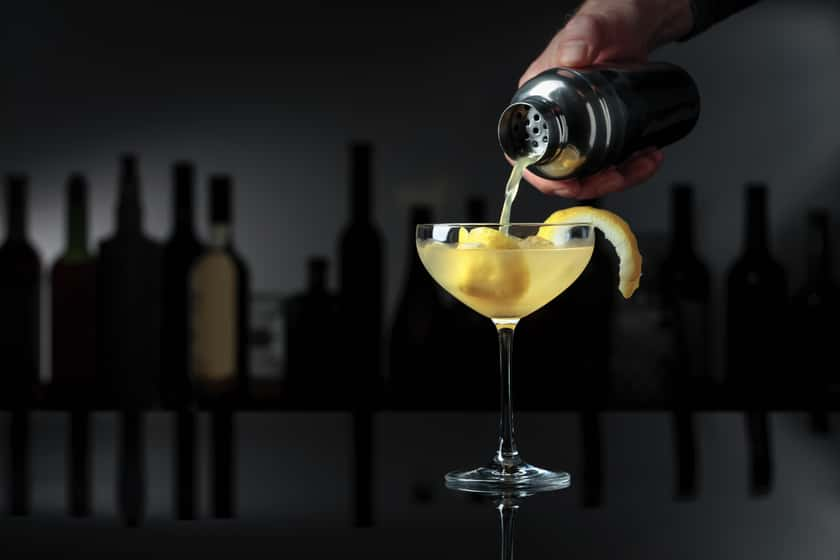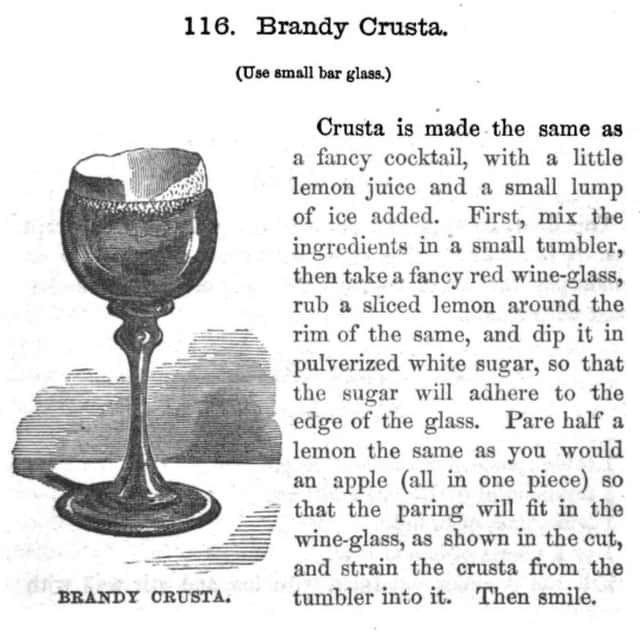A Sidecar in Paris will set you back about $1,500
You’ll Never Get a Sidecar made the same way twice
The term Sidecar means something interesting in Bartending Culture
The Sidecar has deep roots in New Orleans

Get in, loser, we’re going bar hopping. Need a drink recommendation? Let’s take a little blast from the past to launch our evening like a Saturn V rocket!
Bartender! We’ll have two Sidecars!
This classic cognac-based solution is simple, but guaranteed to satisfy.
As with many cocktails, it’s rooted in New Orleans culture with a warm, sweet, and crisp twist of both French and Spanish influence. With an origin like that, you’re bound to have a crowd-pleaser on your hands.
We know, we know…we’re all ideas and no straight facts sometimes at Revelry. Fact is, these things are rarely if ever certain
As a result, all I can do is dig through the details, lay bare what I can find, and let you decide your truth.
That said, it’s always a good time addressing all the wild and unbelievable conspiracy theories about who invented this libation and where it came from.
It’s all the same with good recipes; everyone wants to take the credit, but nobody has the receipts.
Throw on your Sherlock Holmes hats and light up your pipes, ladies and gentlemen. Let’s investigate!
Theory #1: The Ritz Bar in Paris most notably claims that the Sidecar was created at their establishment. The story goes that a soldier from the first World War, a regular customer, would always arrive at the bar riding in the sidecar of a motorcycle.
The soldier wanted a nice glass of brandy, but it was frowned upon to drink it straight up at such an early hour. Those pesky social norms…
But Frank Meier, then head bartender at The Ritz, shook that brandy up with some curacao, lemon juice, and ice and served it up!
It was a hit, and Mr. Meier supposedly named it fondly after this soldier’s favored mode of transportation.
To this day, The Ritz bar so adamantly lays claim to the creation of this cocktail that they attract customers far and wide with the world’s most expensive Sidecar.
A Sidecar purchased at The Ritz bar will run you about $1,500. It’s made with 5 ounces of a rare and aged cognac from 1853, 3 ounces of orange liqueur, and 2 ounces of fresh lemon juice.
Reminder: Vincent Vega from 1994’s Pulp Fiction complained about a $5 milkshake. I don’t care if you’re Mia Wallace or Marilyn Monroe, you wouldn’t get him to buy you a $1,500 cocktail.
Theory #2: A bar in England claims the same situation occurred as The Ritz Bar claims. It is rumored that a bartender named Pat MacGarry invented it at The Buck’s Club in London in 1919.
I’d say the buck stops there, but I just got out of bad joke jail and I don’t feel like going back.
Theory #3: The recipe appeared in one book called The ABC’s of Mixing Cocktails by Harry MacElhone in 1922.
Harry was an American bartender who ran for the hills after the 18th Amendment (Prohibition) was passed and was desperate to continue to hone his craft.
He saw an opportunity at the confusingly-named New York bar in Paris. It’s said that he claimed the ‘regular-in-a-sidecar’ story as well.
Theory #4: The Sidecar also appeared in another book called Cocktails and How to Mix Them by Robert Vermeier…also published in 1922. He also mentions something about a patron in a sidecar. (Are you catching a pattern here?)
Both authors claim to have been the first to discover this recipe yet had both of their respective books published simultaneously.
The recipes listed in the book were identical, with them both saying the recipe calls for equal amounts of cognac, lemon juice, and orange liqueur.
What is the truth, and where is she?!
It sounds like we’ll never know, kids. That’s just life sometimes.

Fun Fact: In bartending culture, a Sidecar also refers to something leftover in a shaker if a bartender made too much of a cocktail. The remainders of the shaker can be served in a shot glass; et voilà a sidecar.
The fusion of cognac, orange liqueur, and lemon was one of the favorites around Prohibition. It was easy to make but had a complex enough taste that made it a delicious excuse to dodge The Fuzz in style.
Would it be a cocktail worth discussing if we didn’t argue about how to make the damn thing?
All around the globe, cocktail lovers debate on the proper proportions of a sidecar, with no single recipe raining as the one true guide to follow.
Across the pond in London, they insist that the proportions should be two parts cognac, one part orange liqueur, and one part lemon juice. Our dear old friend Harry Craddock set this standard in his publication of The Savoy Cocktail Book.
Stateside, in New Orleans, the golden rule is the same proportions as London, but you’ve just got to add simple syrup and lime juice.
The French believe it should be equal portions all around, but they could do without the sugared rim.
Once again, who the hell knows?
With everyone on different pages on how to craft it, it’s very safe to say that you could go to a dozen bars and have a dozen different Sidecars…and probably a massive headache in the morning.
Here are some simple things to keep in mind when making it how you like it.
Do you want it to taste sweeter? Go heavy on the orange liqueur. Sweeter with less citrus? Add simple syrup.
Do you want it to have a little more bite to it? Get a bit more generous with your cognac. Make it any way you please!
As I mentioned earlier, the Sidecar is believed to be closely related to, if not loosely based on, the Brandy Crusta.
For those unfamiliar, the Brandy Crusta is essentially brandy, simple syrup, orange curacao, and lemon juice served in a glass with a sugared rim.
The Crusta was born in the mid-1850s in the middle of the French Quarter by Italian bartender Joeseph Santini.
The drink didn’t take off in popularity until Jerry Thomas, a.k.a the Godfather of American Mixology, put the recipe in his famous bartending book How to Mix Drinks.

In time, this seemed to be a vast inspiration to bartenders everywhere to start adding fruit juice and colorfully flavored liqueurs to help spirits ’round the world go down easier.
With that in mind, it’s not hard to see how easy it must have been for the Sidecar to become the classic hit that it still is to this day.
Feelin’ fancy yet? The Sidecar is a classic crowd-pleaser that’s bound to class up any joint and anybody that sips on one. This one is a certified pinky lifter.
Sip it slowly, lift your pinky, and stay classy!
(Feel free to play with the proportions as you see fit!)
Ingredients:
2 ounces Cognac
1 ounce Cointreau/Orange liqueur/Triple Sec
1 ounce Lemon Juice
Sugar for the glass rim
Preparation:
Combine your cognac, orange liquor, and lemon juice in a shaker filled with ice. Shake vigorously and strain into a sugar-rimmed wine or martini glass.
Actually, use whatever glass you want. I’m not your mother.
Add a lemon twist for that little razzle dazzle..